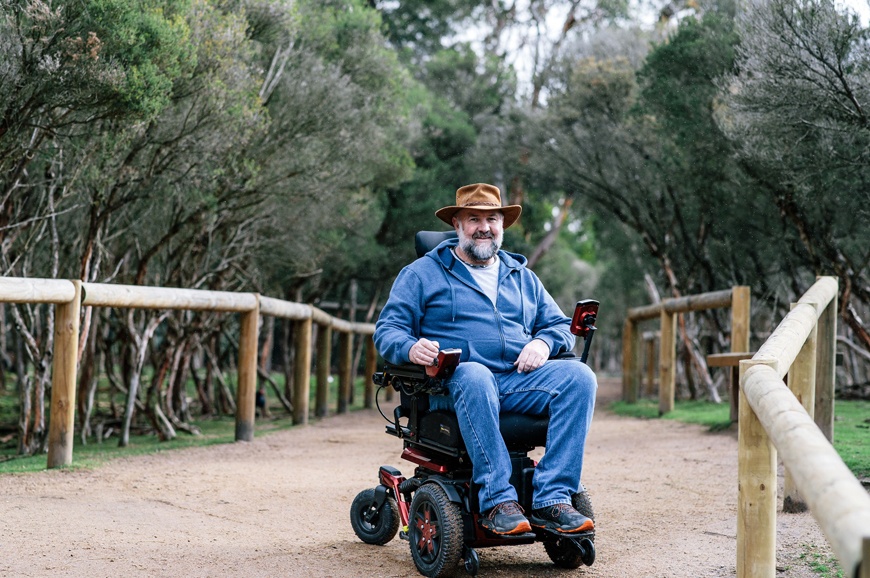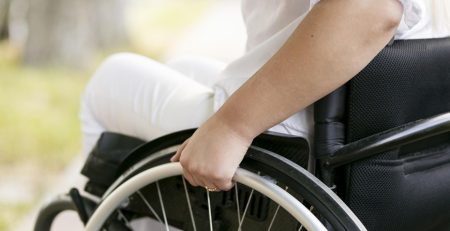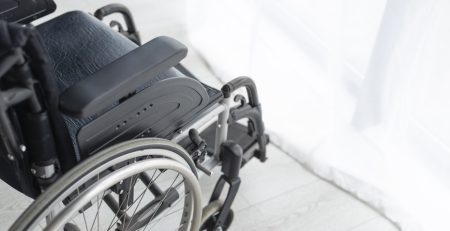- No products in the cart.
How to modify my home to accommodate a new power chair
There are many considerations that a person must make in order to accommodate the use of a power chair. Individuals do not often realize all the areas of their lives that will be more difficult, or potentially even dangerous, if their environments do not adapt to their changed mobility.
A variety of changes — some small and some large — must be made to the home in order to facilitate success and independence. The addition of these features (such as ramps) is also crucial in other settings such as public buildings and social settings. While an individual may have somewhat less control over their ability to access those places, they can begin with making modifications within their homes.
An important consideration for any part of your home is lighting. Light switches should be within arm’s reach, resting about 36 inches off the ground. Individuals can also eliminate glare (hence, increasing safety and vision) by lowering light fixtures, using anti-glare bulbs, or simply taking advantage of your home’s natural light to improve visibility. Here are some other room-specific modifications to assist in comfortably and safely using your power chair in your home.
Entryways
To start, individuals should be sure to widen all the entryways both within and outside of their home. For optimal accessibility, entry points should be a minimum of 32 inches wide. However, individuals who want extra room or who have larger devices should aim for a width of 36 inches.
In some cases, individuals may need to install new doors, but there are several easier fixes that may work just as well. Individuals can install Z-shaped hinges that allow for a clear swing, which places their door flush with the wall. This saves several inches and, in most cases, can prevent the need for a larger fix. Similar changes to doorways include removing doors (and frames) entirely to allow for easier access. Some individuals may opt for curtains, room dividers, or other decor to enhance their privacy in these instances.
Power chair users may also want to install reverse-swinging doors, automatic doors, or replace door knobs with push bars. This will make it easier to efficiently access rooms as needed. Individuals who want to keep door knobs should place them around 36” from the ground for easy access. Another important point is removing all thresholds to ensure there is level terrain and individuals can smoothly go from room to room.
It may be in your best interest to rearrange furniture to increase the amount of open space for you to navigate across. Additionally, especially high traffic areas would benefit from corner protectors, not only to keep the walls from getting dented but also to protect the power chair and the individual using it.
Outdoors
Individuals should utilize ramps that are around 36” wide. While it is useful to install a more permanent ramp or have one made out of wood, there are portable options. Portable ramps that are several feet long can be transported to and from places you may travel in the car to allow for safe access to friend’s homes. In many cases, public buildings (especially government structures) will be handi-cap accessible and should have their own ramps, elevators, or moving sidewalks for you to utilize. Individuals who do not have an enclosed garage or simply want a safe, warm way to get outside will benefit from a cover to protect them from the weather or other elements. Added safety features include hand rails that are 32-36” from the ground and are sturdy enough to support anyone who needs assistance walking.
Flooring
Some of the best materials for individuals who use power chairs are laminate, ceramic, or vinyl flooring. These are non-slip and will prevent accidents while also decreasing the strain on your vehicle by offering even, smooth terrain. If you have any of these options already, it is best to remove throw rugs or area rugs from your flooring, as their thickness will not only be more difficult to move over but they can get trapped under your device.
If you still prefer carpeting over other types of flooring, opt for low pile carpeting that is the easiest to move on top of. Clutter or obstacles of any kind should be removed from the floor, including hallways, entryways, near commonly-used fixtures, and anywhere you frequent with your power chair. Additionally, all outlets should be at least 40 inches from the floor to allow for easy access while you are seated in your chair.
Bathroom
This room can be a bit more costly to modify, but it is well worth the investment as it greatly benefits your safety. The ideal bathing set-up is a roll-in shower with no lip and a recessed drain to prevent water build-up. Individuals who use this option should be sure to get a chest-level shower stand or caddy to keep all of their bathing tools within reach. Shower heads and temperature controls should also be chest-level (around 36” off the ground).
However, this arrangement may not be possible or affordable for some individuals, in which case standard tubs can be modified. Individuals should install ample grab bars in places where they get in and out of the tub and also where they reposition themselves. As far as transferring, individuals can utilize a bath lift with a swivel seat (this allows you to sit on it before it turns and lowers you safely into the tub) or a tub bench (that rests across both sides of the tub). Another option is a tub cut modification that lets individuals use a specially-sealed door to walk in and out of their tub.
The toilet is another high-traffic area. Individuals with power chairs will want to ensure there is at least 2 feet of space (but ideally 3 feet) around the toilet so they can easily and safely transfer from their chair to the toilet seat. An ideal toilet height is 16-17” from the ground, so it is tall enough for most individuals to get on and off. If you are in the market for a new toilet anyway, you will want to seek a taller model with these height specifications or go with a wall-mounted style for added safety.
If you have an older style toilet and cannot or do not want to replace it, there are again options for modifying this fixture. You can get a thicker, more cushioned seat that is not only more comfortable but gives you the added boost to help you get on and off more easily. You can also have an elevated base easily installed for very little money. This will be a much cheaper option than purchasing a new toilet altogether.
Bedroom
The safest place for individuals with power chairs is on the ground level, so one-floor homes are ideal. If this is not possible or you have a bedroom on the second floor, try moving your bed to the first floor if there is room. If not, you can also think about investing in a stair lift to help you safely navigate those tricky stairs.
When discussing inside the bedroom, mattress height can be controversial. Most individuals think that getting the fluffiest, thickest mattress means it will be the most comfortable and the best for your body. More often than not, individuals should opt for mattresses that hover right in the middle of firm and soft. In this same vein, individuals should aim for a mattress that is less than 21” from the ground, which means that its thickness should be balanced out quite well. Most wheelchairs and power chairs are around 19-20” off the ground. So if you need to climb or throw yourself onto the bed from your chair, you are placing yourself in danger of falling or getting hurt.
Another safety measure is positioning your bed so there is three feet on either side, allowing you to safely roll your power chair or wheelchair up alongside the bed and hoist yourself onto the mattress.
Kitchen
Any table, countertop, or workspace should have at least 30” of leg clearance underneath so you do not need to twist your body and risk injury to access what is on top of these surfaces. Individuals can get all new cabinetry at a lower height in order to reach their shelves. However, this is often not an option for individuals. Therefore, a good way around this is placing items that are used most often on countertops or the lowest shelves possible (including inside the refrigerator).
The refrigerator itself may not be too difficult to access, but most models come with freezers stacked on top, which prevents power chair and wheelchair users from accessing it. Individuals may want to purchase a side-by-side refrigerator or a small chest-level freezer to store small quantities of food.
Ovens and stoves should have front controls so you can more easily operate those appliances. It may also be difficult to see into deep pots when cooking, so individuals can have a mirror installed under the hood of the stove, or they can use a small handheld mirror to keep tabs on their food.
As you can see, there are a variety of ways that individuals can modify their home to be more accommodating of their power chair or wheelchair. Some fixes are more costly than others, but individuals can look into grants or community funding to assist with the cost. If this is not an option, some of the more affordable “do-it-yourself” fixes can also greatly improve your safety within the home. As always, be sure to consult a physical therapist, occupational therapist, or mobility specialist if you are having difficulty effectively making these changes in your home.















